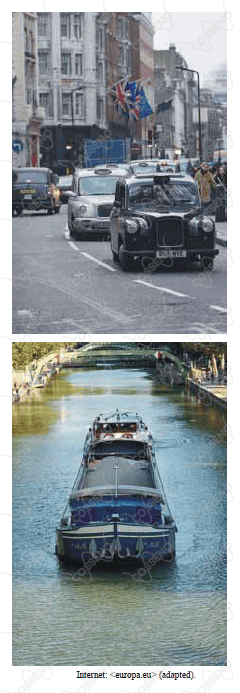[1] Europeans enjoy unprecedented levels of personal
mobility, while goods are shipped rapidly and efficiently
from factory to customer, often in different countries. The
[4] European Union (UN) has stimulated this freedom of
movement by opening national markets and by removing
physical and technical obstacles. But today’s transport
[7] patterns and growth rates are unsustainable.
Moving people and goods quickly, efficiently and
cheaply is a central tenet of the EU’s goal for a dynamic
[10] economy and cohesive society. The transport sector
generates 10% of EU wealth in terms of gross domestic
product (GDP) and provides more than ten million jobs.
[13] The constant growth in mobility puts severe strains
on transport systems. The result is congestion, particularly
for road and air traffic which reduces economic efficiency,
[16] and adds to fuel consumption and to pollution.
Although many aspects of transport policy come
under national governments, it makes sense for the European
[19] single market to have a single transport infrastructure. This
is why the EU has opened national transport markets across
the Union to competition, particularly in the road and air
[22] sectors and, to a lesser extent, for rail.
As a result, trucks can operate in countries other
than their own, and no longer return empty on international
[25] journeys. In 2003, a first liberalisation package opened about
70-80% of long-distance rail freight traffic to competition.
Liberalisation alone cannot solve several
[28] deep-seated problems. These include the dominance of road
over other forms of transport, pollution, and the
fragmentation of transport systems, including poor links to
[31] outlying regions and between national networks.
Congestion charging, where users pay for access to
scarce infrastructure, is also being introduced. One example
[34] is the system, pioneered by London in 2003, which charges
motorists for driving into central districts of town and cities.
Rail is the first target. A freight train in the EU travels at an
[37] average speed of 18 kilometres per hour. Rail must improve
speeds and service levels if it is to attract freight traffic from
roads.

Based on the text, judge the next item.
The transport network in Europe considers national and international aspects.